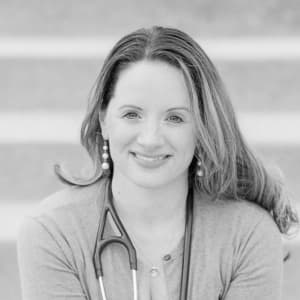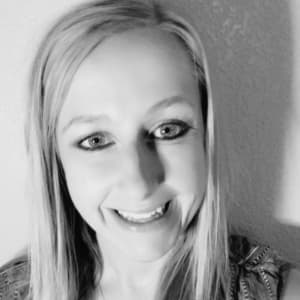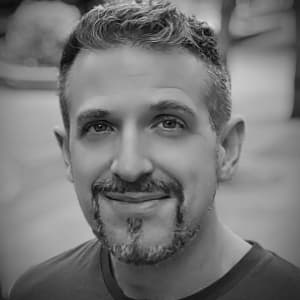Nurse Practitioners in Rural Areas: Working as an NP in Rural America
 Credit: SDI Productions / Getty Images
Credit: SDI Productions / Getty Images- The Centers for Medicare and Medicaid Services reports more than 61 million Americans live in rural areas, including rural, tribal, frontier, and geographically isolated territories.
- Although the number of nurse practitioners (NPs) is growing, the need for rural health NPs is of great concern.
- Meet three NPs dedicated to serving patients as rural health practitioners.
Although the number of nurse practitioners is growing — over 355,000 NPs are licensed in the U.S. — there continues to be a great need for NPs. The U.S. Bureau of Labor Statistics reports about 30,200 openings for advanced practice registered nurses (APRNs) are projected each year, on average, for the next 10 years.
Many NPs dedicate their careers to caring for patients in rural communities. They make care available to patients who otherwise would not have access to healthcare because of geographical barriers and the need for providers.
Rural areas sometimes can offer higher salaries to nurse practitioners, but more funding needs to be dedicated to rural health to recruit providers. Learn more about what is considered a rural area, three NPs who are practicing as rural NPs in their communities, and what advice they give to prospective NPs who are interested in working as providers in rural America.
Defining Rural Areas in Nursing
The Centers for Medicare and Medicaid Services reports more than 61 million Americans live in rural areas, including rural, tribal, frontier, and geographically isolated territories. This means more than 18% of the U.S. population lives in rural America.
People living in rural areas tend to be:
- Older
- Impoverished
- Unemployed
- Experiencing inequities in education
- More prone to chronic health conditions
Rural Americans also have a life expectancy that is, on average, two years shorter than those living in urban settings. They have a harder time accessing healthcare, benefits, and health services. This lack of access continues to contribute to the chronic health disparities happening today.
To make matters worse, healthcare workers, physicians, nurse practitioners, and nursing shortages leave a growing number of rural communities distressed for healthcare. The Association of American Medical Colleges reports only 11% of physicians practice in rural areas.
APRNs, specifically NPs, are taking the lead and filling in the gap in primary care and rural health. They are enabling patients in these communities to access healthcare. Full-practice authority for NPs has been granted to nurse practitioners in 29 states and is on track to expand to other states. NPs are providing:
- Primary care
- Pediatric care
- Trauma care
- Women and maternal health
- Mental health
A rural health NP is a provider serving in the role of patient care in a community often with lower socioeconomic status and fewer resources. In some rural areas, residents are fortunate enough to have a community nurse and/or rural nurse practitioner to meet their healthcare needs.
Here are three NPs who are committed to providing care to residents who live in rural America.
Spotlight: Nurse Practitioners Making an Impact in Rural Areas

Nicole Walters is an assistant professor and the PMHNP psychopharmacology and psychotherapy course coordinator at Regis College.Her research and clinical focus are in the area of nursing leadership with a specialty emphasis in women’s mental health, as well as pelvic floor dysfunction and breastfeeding.
It’s no coincidence Nicole Walters became a rural NP. She grew up in Central Appalachia and, as she describes, in a hollow of a mountain in a very rural, small coal-mining town in West Virginia.
“The closest hospital was an hour or two away with only a small clinic as a stop if you didn’t have emergent needs,” Walters says.
In communities like these, the town relies on one another for everything including basic healthcare, Walters points out. She describes rural life as finding ways to cope if you aren’t bleeding to death or actively dying. But Walters believes this is unacceptable.
“Once I became a nurse, I was determined I would live and serve in a community, so people didn’t have to make those hard choices,” Walters says. “People should have access to some form of quality healthcare on the most basic level.”
Today, Walters is a provider in a small town in southwestern Virginia. She is one of only a handful of providers within 1-2 hours driving for many of her clients. Walters serves a specialty population of women with perinatal and postpartum mental health who otherwise would not have this option for treatment. She uses telehealth services as a nurse practitioner mainly to communicate with her patients from three different states.
With the rise of telehealth services since the beginning of the COVID-19 pandemic, it has revolutionized healthcare by:
- Increasing access to healthcare
- Lowering healthcare costs
- Improving patient outcomes
But providing quality care comes with its challenges.
A challenge faced by many community/rural health providers is the need to be knowledgeable about your community, Walters says.
“Every community has its own needs, and each has specific environmental and cultural aspects that greatly affect healthcare,” Walters points out. “When a provider shows an interest and knows these intricacies, the patient population can trust them.”
Additionally, challenges include the need for more:
- Collaboration
- Trained assistance
- Equipment
- Resources
Rural communities often suffer economically. Keeping costs to a minimum goes hand in hand with being innovative and using the resources you have on hand, Walters says.
Despite the challenges, Walters finds her work rewarding. She chooses to live out her healthcare needs exactly as she practices. She had home births with her children delivered by a midwife, and a local community provider meets her family’s healthcare needs.

Amy Wise is a doctorally prepared certified pediatric nurse practitioner in an outpatient rural community health center in Southwest Arizona on the border of Mexico. She has served in this role for over six years. She is also an adjunct professor at Rasmussen University.
Amy Wise was drawn to rural nursing because the role intrigued her. She loves being able to serve and provide quality healthcare to patients who may lack the ability to access care. Wise is a doctorally prepared certified pediatric nurse practitioner. For over six years, she has worked in an outpatient rural community health center in southwest Arizona on the border of Mexico.
“I see patients for well visits and sick visits, make referrals to specialists, and order laboratory and diagnostic testing for my patients based on their clinical needs,” Wise says.
As a rural NP, you may sometimes have to learn as you go. Because of the lack of resources, you may have to navigate areas in healthcare that would otherwise be referred to a specialist.
One major challenge Wise faces daily is the lack of necessary resources. One of those resources is access to specialists, especially in the pediatric population she serves.
“Many of the pediatric specialists are around three hours of drive time away,” Wise says. “Many of the families are unable to make this trip whether due to their legal status, transportation difficulties, or the overall impact it has on them financially.”
But rather than forcing her patients to become noncompliant or missing out on necessary care because of the lack of resources, Wise collaborates with specialists. Collaborating with specialists allows her to see what she can do to help meet those gaps in care however possible.
But if all options are exhausted, and the patient has no option but to see a specialist, Wise arranges transportation for the families.
“Many times, we are able to get transportation costs covered through Medicaid/Medicare services or through taxi services offering their services to meet community needs,” Wise says.

Josh Hamilton is assistant vice president and dean of postlicensure programs at Rasmussen and has a telehealth mental health practice that reaches patients in rural Nevada, Arizona, and Minnesota. He owns a telepsychiatry practice that reaches individuals and families in remote and rural areas of Nevada, Minnesota, Arizona, Idaho, and Oregon. He is an active supporter of local animal rescue and rehoming efforts and charities that provide critical transportation for patients in need of distant life-saving specialty healthcare.
Josh Hamilton grew up in a rural area. The best way to provide care and support for the community he knew was to work as an NP. The healthcare system and the strengths and challenges of the community were well-known to him.
“My training gave me additional skills and authority to directly intervene to promote health, prevent illness, and to care for a variety of health issues as they emerged,” Hamilton says.
After providing primary care services for a few years, Hamilton saw more patients with mental health conditions. Access to mental health services in rural areas is challenging. Reasons include:
- Lack of mental health professionals
- Lack of transportation
- Stigma
- Lack of awareness
Mental health and mental disorders are higher in rural areas than in urban settings. Suicide rates are nearly double, and men between the ages of 20-30 and over the age of 85 are at greatest risk.
Hamilton decided to complete additional training and receive his credentials online as a psychiatric mental health nurse practitioner (PMHNP). This way he could address the mental health conditions in his community.
Distance or online education allows students in a rural community like Hamilton to earn graduate credentials with some flexibility.
“The only university in Wyoming is located 2.25 hours away from my hometown, so I was thrilled by the access to online coursework,” Hamilton says.
It also allowed him to earn his PMHNP into his program of study within eight months of his doctoral graduation.
Hamilton’s practice which provides telepsychiatry reaches individuals and families in remote and rural areas of Nevada, Minnesota, Arizona, Idaho, and Oregon. He meets with patients via telehealth to assess, diagnose, and treat various mental health conditions like:
- Depression
- Anxiety
- Attention deficit hyperactivity disorder
- Mood instability
“I provide medication management and counseling/psychotherapy services to patients and families of all ages in this setting,” Hamiltion says.
How Nurse Practitioners Improve Community Health in Rural Areas
Nurse practitioners improve communities, especially in rural areas by providing primary care services, managing chronic diseases and promoting health and wellness. NPs are often highly educated and have experience and certifications in multiple specialties.
The role of a rural NP varies from day to day. They may be in clinical settings, making house calls, or providing telehealth.
“Another day of the week may include working a community event to offer health screenings for high blood pressure or diabetes while giving a talk about how to improve your cholesterol,” Walters points out.
There are also advantages to NPs who live in the communities they serve. Living in the community can be professionally and personally beneficial. For example, living in the community:
- Builds trust and engagement among patients and providers
- Improves collaboration with other local providers
- Provides greater job satisfaction
- Reduces commuting time
NPs who live in these rural neighborhoods have strong relationships with their patients and an enhanced understanding of the culture of the community.
“They grew up with their patients and their families. We are a known quantity to those who need us most,” Hamilton says. “In small towns, these relationships make all the difference.”
Advice for Prospective Rural NPs
Becoming a rural NP is a very rewarding role, and there is a great need for passionate providers who want to help those who may not have adequate access to healthcare. If NP students or experienced NPs are looking into going into rural health, Walters advises to first look at your own community needs.
A nursing figure to study would be Mary Breckenridge, a community/rural health nurse, says Walters. She served Central Appalachia from a multispecialty and generalist public health nurse perspective in the early 20th century.
“As a community, rural NP, each day brings something new, problems to solve, deeper relationships with the patients you serve, and satisfaction that you are helping and caring for both the science and caring nature of nursing,” Walters says.
One fear new NPs may have is the fear of imposter syndrome as an NP or the fear that they may not know everything. Hamilton advises not to worry.
“You might feel like you’re expected to be everything to everyone, but the most important skill is to leverage your history and reputation in a community,” Hamilton points out. It is most important to commit to:
- Networking
- Developing your skills and professional relationships
- Collaborating with other providers to provide optimal patient care with the best outcomes
To attract more NPs into rural health, the federal government needs to provide more funding and nursing grants for NP students and experienced NPs to incentivize them to work in rural communities. NPs interested in working as rural health practitioners should consider programs like Nurse Corps Loan Repayment Program. The program pays up to 85% of unpaid nursing and NP student loans in exchange for servicing critical shortage facilities.
People need community, they need trust and continuity of care with someone they know, and who knows them, Walters believes. “This gives them a sense that someone will have their best interest when planning treatment.”
